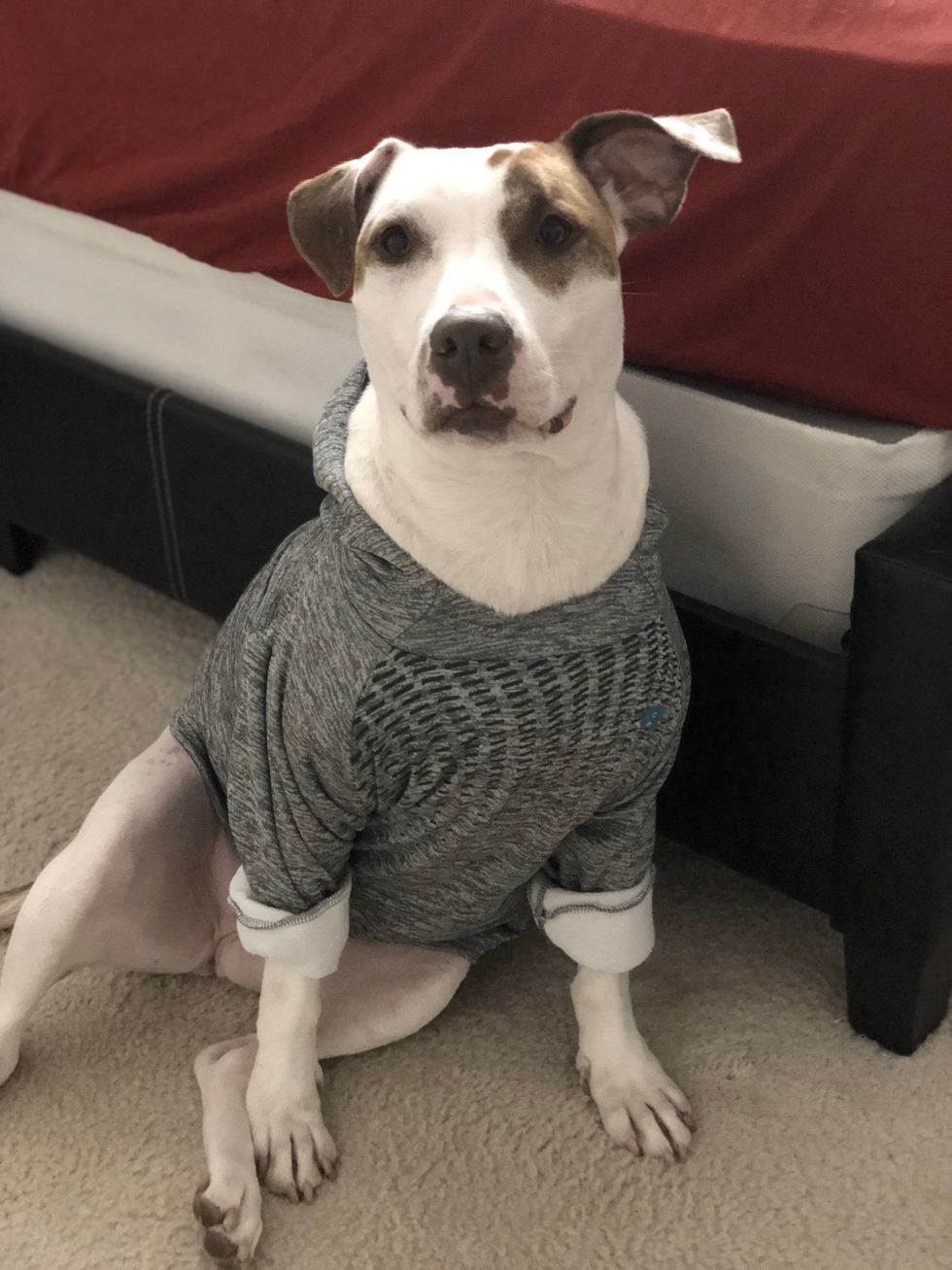The Good And The Bad When Buying Treats For Your Pets This Holiday Season
Watch out for certain products when shopping for your furry child.
There is no pet owner out there that doesn't adore watching their pet light up with pure, unfiltered excitement when being given treats from their favorite person which is you!
Treats are fantastic for multiple reasons. You can use them for training when rewarding your pet for positive behaviors or fun tricks, you can give them treats just for the heck of it and you can watch the wholesome joy on their face when you give it to them!
We are very fortunate to be living in a time where an animal's mental and physical health has become a high priority, so much so that studies have been flooding in for the past twenty or so years on psychological and physical health for a wide variety of animals.
With that said, I will be using scientific resources as well as my own experience from working at a pet store for two years to help guide the way to the best treats you can get for your pet without breaking the bank.
The hardest part about taking information from a lot of articles that try to educate on buying good treats is they typically try to claim what is the best treat to get, and that's not the question to ask. What every pet owner needs to ask is:
What ingredients and parts of the prey animal should we look for in a treat and what should we avoid?
This isn't just limited to little bite-sized treats you use as rewards. This also includes bones, table scraps, chewies, etc.
1. The good

For bite-sized treats for training with easy keepers, meaning your dog gets fat on air, low-calorie treats are a good way to go.
When you think about a bite-sized treat that isn't even larger than a dime, the subject of a low-calorie treat for a dog may not seem like a substantial need but for a lot of dogs that are bred to be easy-keeper dog, it is a very substantial need considering the sheer amount of treats we feed our dogs.
Fortunately, there are a lot of low-calorie treats you can get for your dog including jerky, soft chews and dental chews.
If your dog isn't such an easy keeper and you need some bite-sized treat, a word of caution. Just because a bag says that it is 'natural' or 'organic' does not necessarily mean it is the healthiest thing to get. Typically with bite-sized treats that are small enough to be useful for training rewards, are still very processed even if they are organic. Which is why there is not a huge selection of organic bite-sized treats on the market.
However, there are still fantastic brands that put good stuff into their bite-sized treats. One I will always recommend profusely is Zuke's bite-sized treats. Not only have I personally had great results from using them with my own dogs, but they were also voted best.
These are probably one of the best bite-sized treats on the market because they have a variety of flavors. The treat itself is low-calorie even though it's not advertised as being low-calorie, the treat is soft and chewable for dogs who have sensitive teeth, the proteins aren't in a 'meal' form on the back of the bag in the ingredient's section and they don't use chicken fat in every flavor even if it isn't advertised as being a chicken-flavored treat.
Chicken fat in treats and dog food, in general, is put in food to help with healthy skin and coat as well as help prolong the shelf life of the product, which is great... except for the dogs that are highly allergic to poultry products, which is most dogs.
If a dog is allergic to anything they more often than not are allergic to chicken and other feathered proteins such as fowl, but whether your dog is allergic or not to chicken, Zuke's is a great way to go precisely because of the reasons listed above.
For treats other than training and is purely used as a treat that you don't mind if it doesn't last long, freeze-dried raw is an incredibly healthy and yummy treat for your dog. From the two years, I have worked at the pet store I never had a customer return any of our freeze-dried raw treats.
These treats are usually in the form of little nuggets or patties and are used as food toppers, but you can also get freeze-dried treats such as bully sticks, bully braids, pig ears, fish skins (very smelly, so feed outside), duck feet, turkey necks and the list goes on. These are as close to raw as you will get without it actually being a raw and wet protein because freeze drying is basically just taking the water out of the product.
The only downside to freeze-dried food is they can be very rich treats for certain dogs that have sensitivities and can't handle raw food. If your dog is like this, you can get cooked bully sticks, bully braids, chicken feet, pig ears, duck feet, turkey necks, fish skins (again, very smelly), etc.
These treats also take a lot of water to digest, so make sure your dog has fresh water available to them, which they always should, so this isn't a terrible problem considering how positively dogs react to freeze-dried raw treats and how healthy they are.
If you need a treat that will last a prolonged time, raw bones are a very healthy treat that taste great, last a long time, and help keep your dog's teeth clean so well that it can save you thousands in dental care over time. The only downside to these is they can be expensive if you have a large (determine) dog that goes through them very quickly. I have a 40 lbs adult border collie that usually goes through a small beef marrow bone in a week and a half, two weeks at most.
If you have a butcher that you get your meat from, usually they have scraps they will give you for free. Usually, people don't have a butcher they go to privately so your local pet store more often than not will have great brands that sell frozen raw bones that are pre-cut to make it easier for your dog to chew. However, buy at your own caution if you have either a picky puppy or a puppy with a sensitive GI tract because this can be a very rich treat considering this is completely raw.
For a sensitive dog, your treat selection can be trickier because every sensitive dog is different. The best way to not only find good treats for your dog but also a good food for your dog, an allergy test is a great way to go before changing their food or buying brand new treats for them, because the last thing you need is to buy your Shit-zu some new treats and find the next day that she had the runs.
Unfortunately given how every sensitive GI tract is very different, I can't give a lot of advice, but I can say the best way to get treats for your sensitive dog is to get something that is cooked, like jerky and biscuits.
2. The bad

The treats I'm going to put in here aren't all necessarily bad, but they're not the best. However, I will say that a bad thing to give your dog is cooked bones because they pose as a choking hazard. This is especially important when feeding table scraps during the holiday season.
A lot of birds are getting stuffed and cooked this season, and a common mistake is people giving pets the rest of their wings and drumsticks thinking the dog will finish off the rest of the meat on the bone.
This is sometimes the case, but more often than not dogs either ingest harmless to large chips from these bones, or they try to swallow the bone whole when they can't chew it up. Causing injury to the GI tract, blockage, lacerations in the mouth and throat and choking.
Veterinarians have agreed that the best bones to let your dog chew on is raw bones, but even then be sure to exercise caution because raw bones can still chip but they are softer and more comfortable to chew on and digest versus cooked bones.
While on the subject of dinner, try to avoid feeding table scraps because they can be very fattening and cause bad habits when you're at the dinner table. Not only bad habits and fattening food, but you can accidentally feed something to your dog that they can pose long-term risks and also immediate harm, and it's not limited to just cooked bones.
Certain foods and spices such as onions, garlic, salt, cocoa and nutmeg are toxic for dogs, and these are very common ingredients to everyday meals. Other than that, avoid treats with the following ingredients at all costs:
- Corn and wheat gluten
- Meat meals and by-products
- BHA (Butylated Hydroxyanisole) & BHT (Butylated Hydroxytoluene)
- Ethoxyquin & PG (Propylene Glycol)
- Food Dyes (Blue 2, Red 40, Yellow 5 and 6, 4-MIE) and rendered fat
The above ingredients are extremely processed ingredients that are often found in cheap products such as Iams and Pedigree that pose to make the product look more appealing rather than being healthy.
This includes rawhide. The companies that sell it do a very good job at marketing it during the holidays, so don't be fooled by the giant candy cane shaped rawhide bone (like I was) because nine to 10 times your dog will straight up refuse to eat it when you start feeding them healthier treats (as my dog did, $20 disappeared that day).
So don't be fooled like I was, not only by the holiday deals but also from the horrid amount of health risks rawhide poses. First, toxic chemicals (can contain trace amounts) are used during its production, most dogs have some sort of digestive upset including prolonged farting, they have an enormous potential for choking and intestinal blockage, there have been numerous cases of foreign objects being found in rawhide and they are bleached white just for the appearance.
Bad all around, and they are unfortunately trendy because they last a long time. If you want a healthy-ish treat that lasts a long time, get a cooked bully stick or braid. You can find them at almost every pet store and even at Costco in a bundle of 30-50 for very cheap.
You do not have to be extremely critical but do some research on companies that market their treats as 'natural' or 'healthy' because technically, these words have no legal limitations for how a company can sell their product.
This means that companies can advertise their product as being healthy or natural, no matter what their product contains. So don't let labels fool you because of fancy words.
Exercise caution, be critical of advertising and the labeling of products and do some research before buying for your furry child this holiday season.























 Photo Courtesy of Caroline Gutierrez
Photo Courtesy of Caroline Gutierrez


















